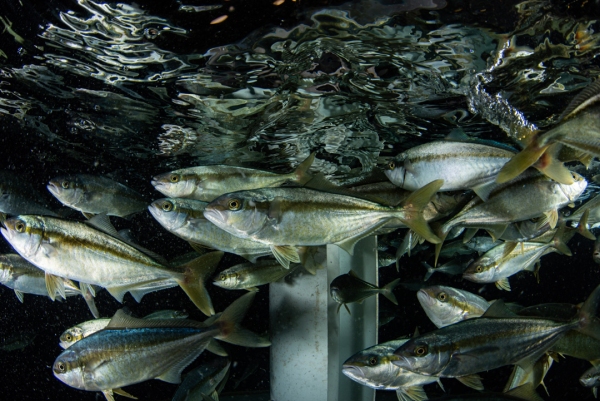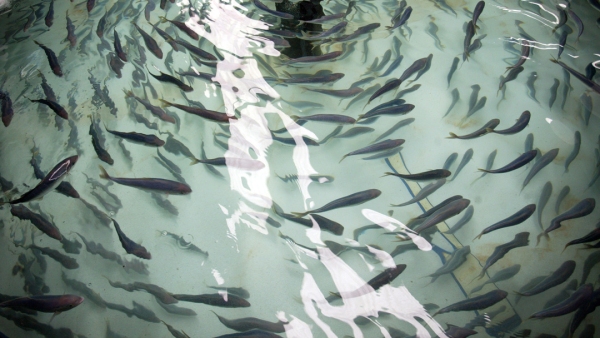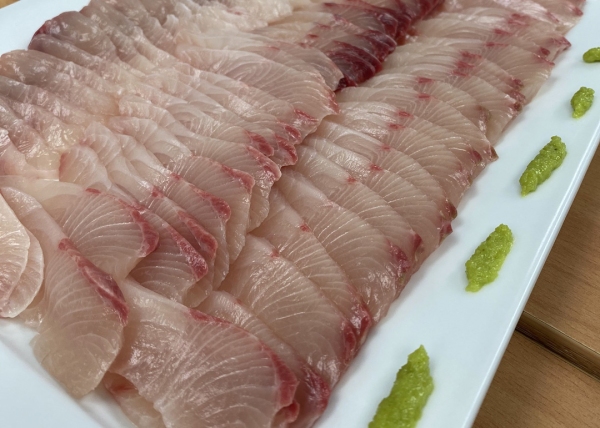Before fish Alvin Setiawan studied weta and penguins. These days he’s never far from the kingfish tanks at NIWA’s Northland Marine Research Centre at Bream Bay, near Whangarei.
It’s here that New Zealand’s largest team of aquaculture specialists work on fish physiology, behaviour and genetics in land-based tanks to support the aquaculture industry with unique science.
“We currently work on two main species: kingfish and hāpuku," Dr Setiawan says.
"Research to develop a new species is very expensive, so we learn how to breed and grow, and what the optimal conditions are. The objective is to then give it to the industry, reducing the barrier for them to adopt new species for market. With kingfish, we are pretty much ready. With hāpuku, we are getting there."
What is so special about yellowtail kingfish?
The genus which yellowtail kingfish (Seriola) belongs to is farmed in many places around the world. Y
ellowtail kingfish itself (Seriola lalandi) is farmed commercially in a few places, (e.g. Japan and Australia).
The global demand is massive and the market prices are quite high. At the moment, NIWA scientists can grow a 3.5kg fish in a year.
“It is an attractive fish, it grows really fast and the market is ready for it. It is a premium sashimi and sushi fish, and it is delicious."
Dr Setiawan is confident about the future of the operation, saying because of the extent of the work that has already been done, it will be relatively easy to transfer the knowledge obtained from the research context straight to the industry. NIWA now has the green light to go from having just a research program on site to running an actual farm, which will be an on-land recirculating aquaculture system (RAS).
Why is NZ investing in RAS?
“A good way to understand recirculating aquaculture is to think of an aquarium," says Dr Setiawan. "You have a set amount of water and it recirculates.
Recirculating aquaculture is the same principle, but on an industrial scale. The idea is that you have a tank with a lot of fish and they need O2, secrete CO2 and produce waste. You process this water and you keep putting it back into the tank with a bit extra to compensate for evaporation.
In a tight system like we have here, you should only need to replace 5% of the entire volume every day.”
He says because this is a closed system, a lot of factors can be controlled. The water coming in can be cleaned and also temperature-regulated to optimise the growth rate. The water coming out can also be treated, minimising the nutrients and other outputs going back into the natural ecosystem. This also greatly reduces, or even eliminates, the risk of pathogens coming in or going out of the farm.
“Often in aquaculture research, things that work on a small scale are very different once you scale them up and this is where industries are wary if it will ultimately work for them. The scale of research we do at NIWA is what makes us different because we can use 5,000, 10,000 and 20,000-litre replicated tanks. This gives us the confidence that it’s going to work in the big 600 or 1,500 tonne farm.”
From fish egg to our plates
On site, seven tanks hold the kingfish broodstock, with around 20 fish in each tank and equal male/female ratios.
Most of these are fish that were bred on site. They first breed at three years old, but become good breeders around five years old.
The fish will typically reproduce between December and March, but this can be changed, since the photoperiod and temperature of the water can be controlled.
“When the fish breed, the female will squirt out hundreds of thousands, sometimes up to millions of eggs. Multiple males will inseminate these eggs, which will then float to the surface and get collected. Each morning, we look at the quality of these and decide if we are going to use them or not. If they are good, we will disinfect and incubate them. It will then take two days for the eggs to hatch. After another two days, the staff can transfer them into the nursery area where they will start being fed.”
The fish are split up and transferred into larger tanks as they grow bigger. They can be harvested when they turn one-year-old and weigh between 2.5 and 4kg. That is the end of their journey on NIWA’s production side and they are ready for market.
A small proportion of fish is selected for future brood stock: best growing, best traits, while avoiding inbreeding. These fish will be then be put on the brood stock diet and become breeders three to four years later. And so begins the next cycle.
Hope for the future
World demand for sustainable products, such as kingfish, is increasing. People are also looking for a product where the supply and quality is consistent. Dr Setiawan is confident RAS provides a bigger buffer that can help mitigate the impacts of climate change, unpredictability and pollution.
“We want this farm to be a success. We have good sea water, a scale from small to large tanks, and we are also set up to do ecological research. If NIWA can show that it is working well, and people can see the benefits of it, hopefully it will catalyse other players to want to use this system.”
Dr Alvin Setiawan
Q&A with Dr Alvin Setiawan
How long does it take from eggs to final product?
It takes one year from egg to final product, which is really fast compared to many other fish.
Are NIWA’s fish healthier than wild ones?
Kingfish in the wild will most likely have parasites. It’s ok to eat, but our fish are largely free of these pathogens.
Do wild specimens make it into NIWA’s tanks?
We do have wild fish coming in to increase our genetic stock and genetic diversity. The first thing we do is treat them for any diseases and parasites, which is very easy to do because they are contained in tanks.
What do kingfish eat?
The food changes. We first feed them tiny rotifers and artemia, then start giving them commercial food from 24 days. The fish are split up and transferred to larger tanks as they grow bigger.
Dr Alvin Setiawan’s biography:
His research encompasses various aspects of fish physiology, behaviour and genetics within the aquaculture context. These include whole-animal and molecular aspects of reproduction, growth and welfare as well as genetic selection of yellowtail kingfish (Seriola lalandi). He is also interested in the relationship between environmental tolerances and growth performance, and optimal feeding strategies for growers and broodstock.
Find out more about Aquaculture research and services at NIWA



